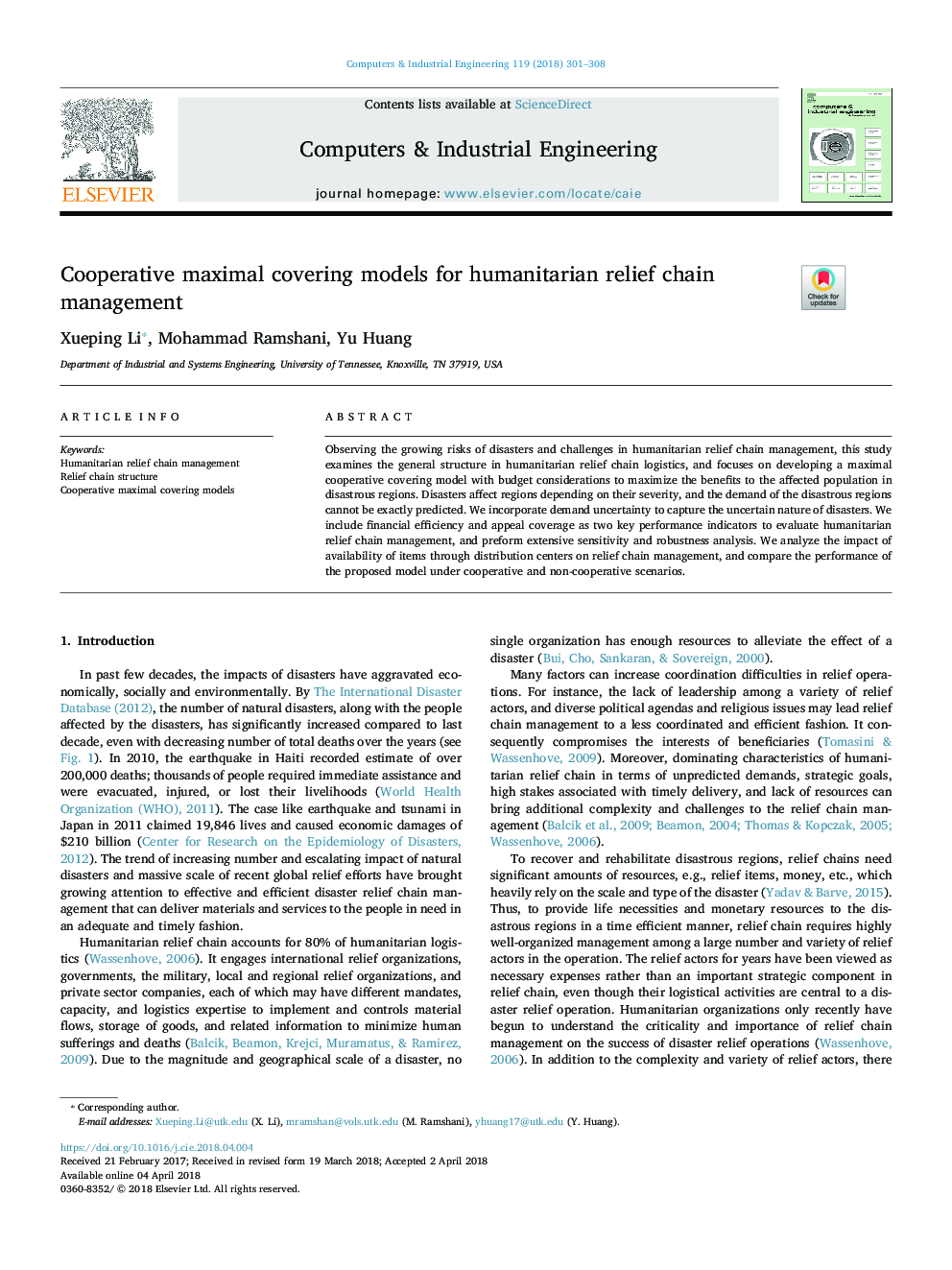| Article ID | Journal | Published Year | Pages | File Type |
|---|---|---|---|---|
| 7541204 | Computers & Industrial Engineering | 2018 | 8 Pages |
Abstract
Observing the growing risks of disasters and challenges in humanitarian relief chain management, this study examines the general structure in humanitarian relief chain logistics, and focuses on developing a maximal cooperative covering model with budget considerations to maximize the benefits to the affected population in disastrous regions. Disasters affect regions depending on their severity, and the demand of the disastrous regions cannot be exactly predicted. We incorporate demand uncertainty to capture the uncertain nature of disasters. We include financial efficiency and appeal coverage as two key performance indicators to evaluate humanitarian relief chain management, and preform extensive sensitivity and robustness analysis. We analyze the impact of availability of items through distribution centers on relief chain management, and compare the performance of the proposed model under cooperative and non-cooperative scenarios.
Related Topics
Physical Sciences and Engineering
Engineering
Industrial and Manufacturing Engineering
Authors
Xueping Li, Mohammad Ramshani, Yu Huang,
